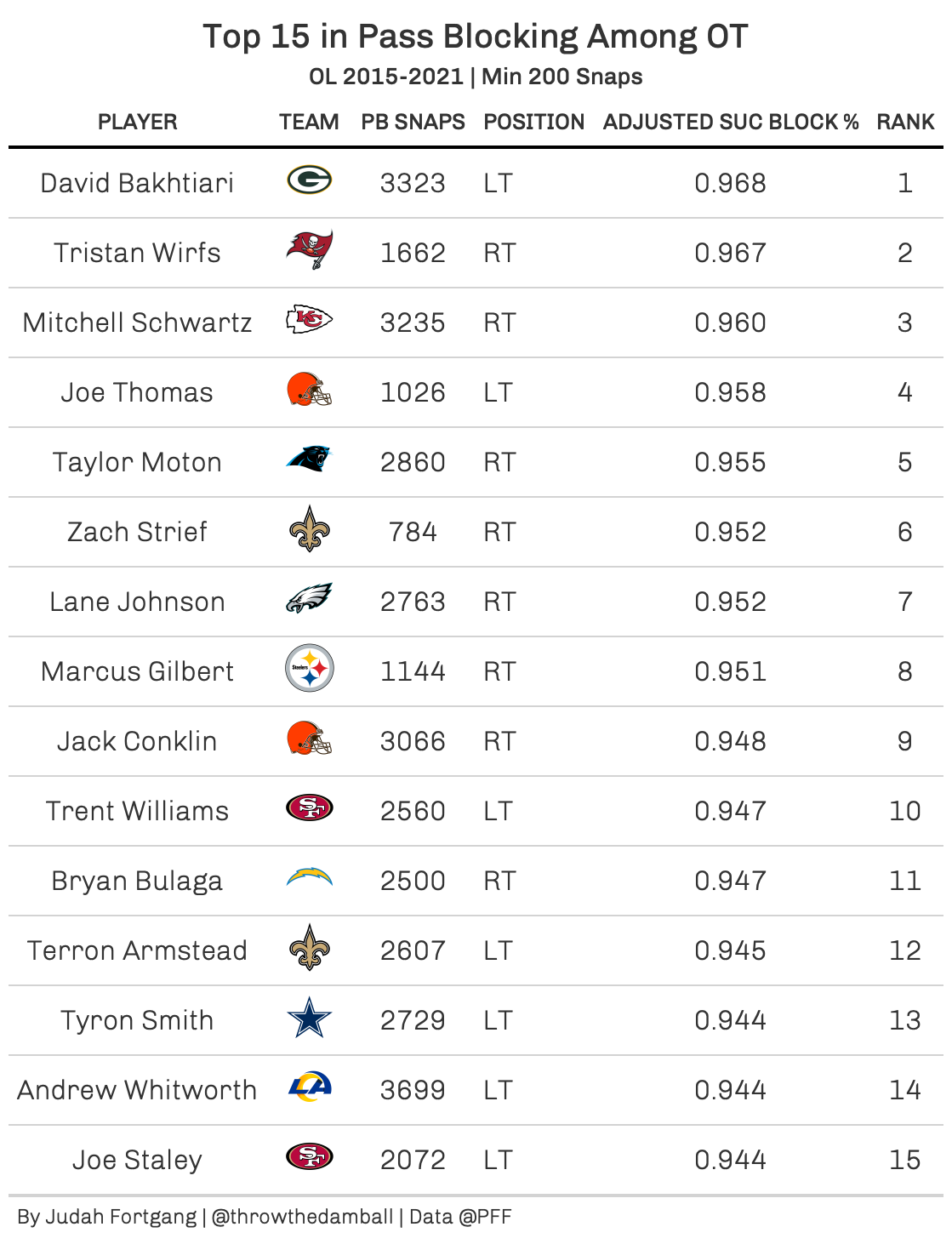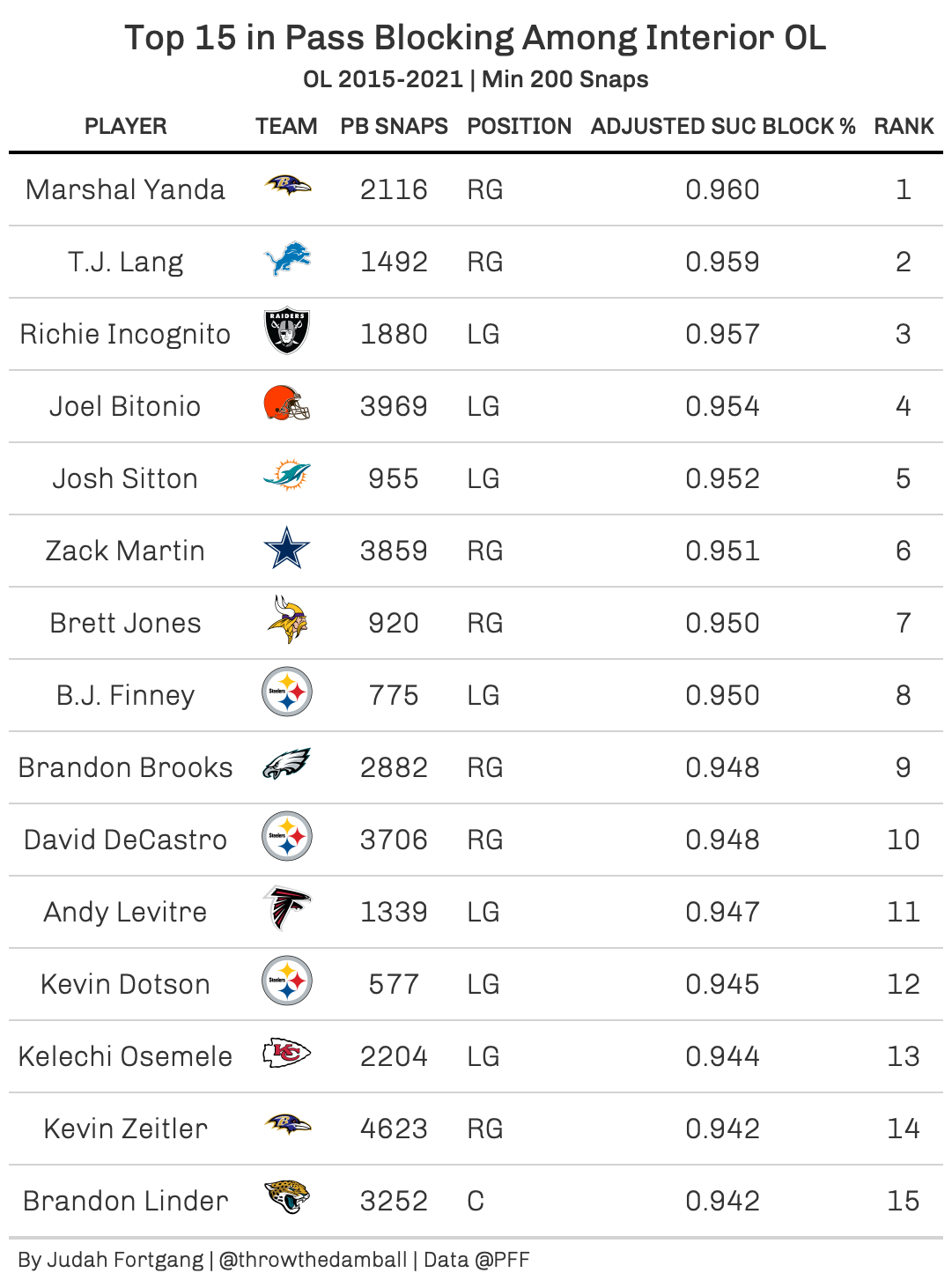We at PFF have recently delved into studying weak- and strong-link systems in football, such as perfectly blocked runs and passes and perfectly covered plays.
These articles detail the cost of one mistake in the link — how one poor block or mistake in coverage creates starkly diverging expectations between “perfect” and not. These pieces, however, really explored only the base rates and team effects on the play level, without diving into the individual players who comprise them. In this article, we will dive into pass blocking on the player level and the resulting findings and implications for NFL team building.
Successful Blocks
A successful pass block is when a player achieves a PFF pass-blocking grade of 0 or above on a scale ranging from -2 to 2. This is essentially a play in which he does not “mess up.” But these raw numbers lack the critical context that allows us to evaluate the blockers who most often succeed in their assignment. Not all blocks are created equal. Blocking against Aaron Donald or T.J. Watt is not the same as blocking against an average defensive lineman. Blocking on a screen or a quick-developing route is far easier than doing so on a seven-yard drop with long developing routes.
To account for such contextual factors, we've created a model that incorporates game factors such as down, distance and yards to go. It adjusts a successful block grade for an offensive lineman’s position, the matched-up defenders position, determinative features such as RPO and screens and other features such as dropback depth and the talent of defender (measured by past PFF pass-rushing grades weighted toward the proximity of a given play). While the methodology and findings are interesting in their own right, it is only a minor focus for this discussion about team building.
With the model in place, and context adjusted for, we can begin to see who messed up least and most often in pass protection among offensive linemen since 2015.


The results are unsurprising. This seems to function as a good indicator that our adjustments captured the right predictors. These lists roughly correspond to anyone’s rankings of good offensive linemen. While a revealing list, it is the applications of these findings that are far more interesting.
Exclusive content for premium subscribers

WANT TO KEEP READING?
Dominate Fantasy Football & Betting with AI-Powered Data & Tools Trusted By All 32 Teams
Already have a subscription? Log in




 © 2025 PFF - all rights reserved.
© 2025 PFF - all rights reserved.